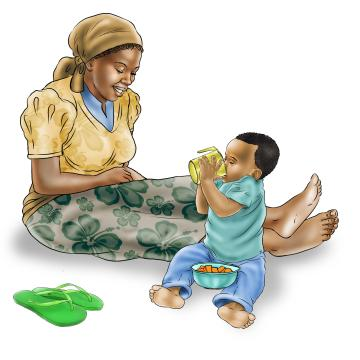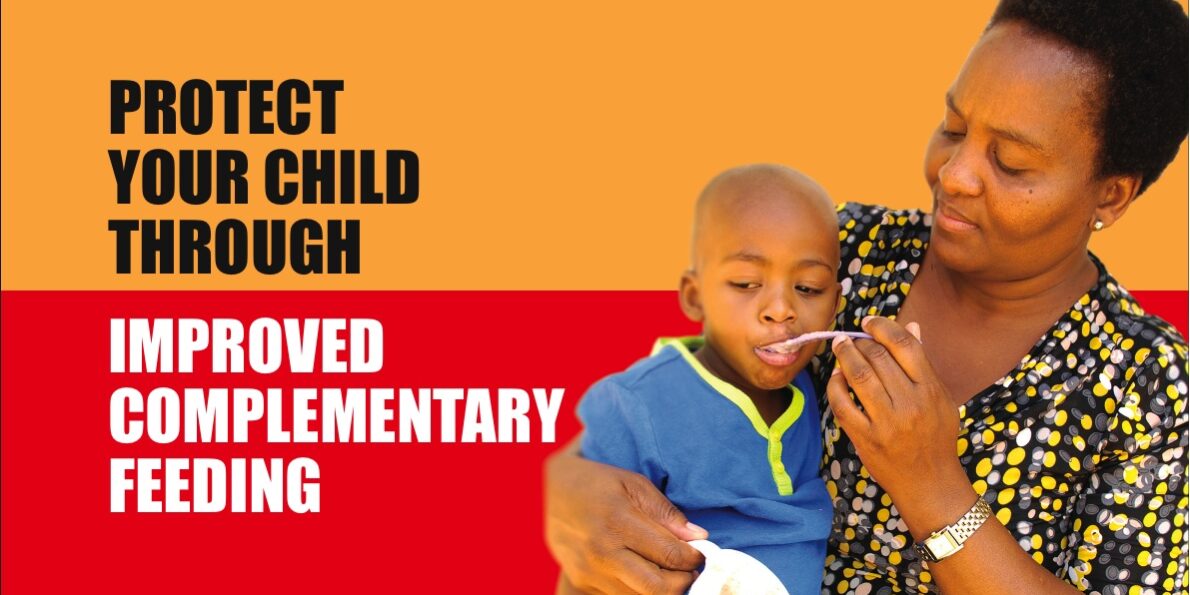What is complementary feeding?
Complementary feeding refers to the process of introducing solid, semi-solid, or liquid foods alongside breast milk during early childhood. While breast milk remains the primary source of nutrition during the first six months, complementary foods are essential to meet a child’s growing energy and nutrient needs. These foods provide vital nutrients such as iron, zinc, and other micronutrients that are crucial for physical growth, brain development, and immune system function.
Why is it important?
Complementary feeding is a crucial aspect of infant and young child nutrition, representing the transition from exclusive breastfeeding to a more varied diet alongside breastfeeding. This phase of feeding, typically beginning at six months of age, provides essential nutrients that are not sufficiently available through breast milk alone. It is an opportunity to safeguard a child’s growth, cognitive development, and overall health, setting the foundation for a lifetime of good nutrition. However, despite its importance, complementary feeding is often not done appropriately, leading to nutritional gaps that affect many children worldwide

Credit: SPRING (UNICEF for Every Child: IYCF Image Bank)
The Importance of Timely Complementary Feeding
- Brain Development
A child’s brain grows rapidly during the first two years of life. Micronutrient deficiencies, particularly iodine, iron and zinc, can lead to long-term developmental delays, impacting cognitive and motor development.
- Physical Growth
Iron deficiency is common among children who are not properly introduced to complementary foods and can lead to anemia, inadequate energy intake, compromised immune system, and poor growth. Complementary foods that include vegetables, fruits, and cereals provide the necessary nutrients that support healthy growth.
- Immune System Support
An optimal diet strengthens a child’s immune system. Complementary feeding introduces foods that offer essential nutrients like vitamins A, C, and D, which help protect against infections and diseases, building long-term health resilience.
Barriers to Effective Complementary Feeding
Despite the obvious benefits, complementary feeding practices remain suboptimal in many regions, especially in low-income communities. Several barriers prevent caregivers from practicing complementary feeding correctly, including:
- Lack of Knowledge
Many parents or caregivers lack proper information about when and how to introduce solid foods to their babies. Misperception about appropriate food types, portion sizes, and meal frequency can lead to malnutrition.
- Economic Constraints
In some parts of the world, access to nutritious, affordable foods is limited. Poverty and limited affordability means that families may not have access to a variety of complementary foods, limiting children’s nutrition.
- Cultural Beliefs and Practices
In some Ghanaian societies, traditional beliefs and misperceptions about infant feeding may delay the introduction of complementary foods. Some parents may believe that exclusive breastfeeding is sufficient beyond six months, not understanding the nutritional needs of growing children. [there is also the misperception that some nutritious foods are not for young children]
- Access to Health Services
In many rural areas, access to healthcare and nutrition advice is limited. Lack of access to professional support means that parents often do not receive guidance on proper complementary feeding practices.
Advocacy for Improved Complementary Feeding
To address the challenges and ensure that every child has access to proper nutrition, it is essential to advocate for improved complementary feeding practices. Here are a few strategies:
- Promote Education and Awareness: Public health campaigns that educate parents and caregivers about the benefits of timely and appropriate complementary feeding are essential. These campaigns should be culturally-sensitive and delivered through various platforms, including community meetings, healthcare providers, and social media.
- Improve Access to Affordable, Nutritious Foods: Governments, non-governmental organizations (NGOs), and the private sector should work together to improve access to affordable, locally grown, nutrient-rich foods. This can involve promoting the use of locally available ingredients for complementary feeding, reducing the cost of nutritious foods, and supporting local farmers.
- Strengthen Health System: Healthcare providers play a pivotal role in educating caregivers about the importance of complementary feeding. Training healthcare workers and ensuring they can provide accurate guidance will help ensure that families receive the right information. Integrating complementary feeding education into routine health checkups will promote timely interventions.
- Community Engagement and Support: Community-based interventions can be extremely effective in addressing malnutrition and promoting better feeding practices. Peer support networks and local leaders can help spread knowledge and change harmful practices, empowering caregivers to provide better nutrition to their children.
- Policy and Advocacy: Governments need to prioritize complementary feeding in national nutrition policies. This includes setting clear guidelines on age-appropriate foods, promoting breastfeeding alongside complementary feeding, and providing support for food security. Strengthening policies around maternal and child health will improve the overall nutritional status of children.
- Conflict of interest: Regulatory bodies such as the the Ghana Standard Authority (GSA) and the Food and Drugs Authority (FDA) need to sensitive the public on unhealthy
- Enforce legislation of unhealthy foods:
Call to Action
- Educate caregivers about the importance of introducing nutrient-rich, age-appropriate solid oer semi-solid foods at six months, alongside continued breastfeeding.
- Provide access to affordable, locally available nutritious foods to families, especially in regions with food insecurity.
- Strengthen healthcare systems by training healthcare professionals to counsel parents on effective complementary feeding practices during routine child health visits.
- [Raise awareness through community-based programs and mass media campaigns to ensure families have the knowledge and resources for proper feeding.] [to be combined with 1]
- Advocate for policies that integrate complementary feeding into national nutrition programs and ensure nutritional guidelines are easily accessible.
- Collaborate with governments, NGOs, and the private sector to improve food security and make nutrient-dense foods available at affordable prices.
- Support research and evidence-based interventions that enhance complementary feeding practices and improve child nutrition.



